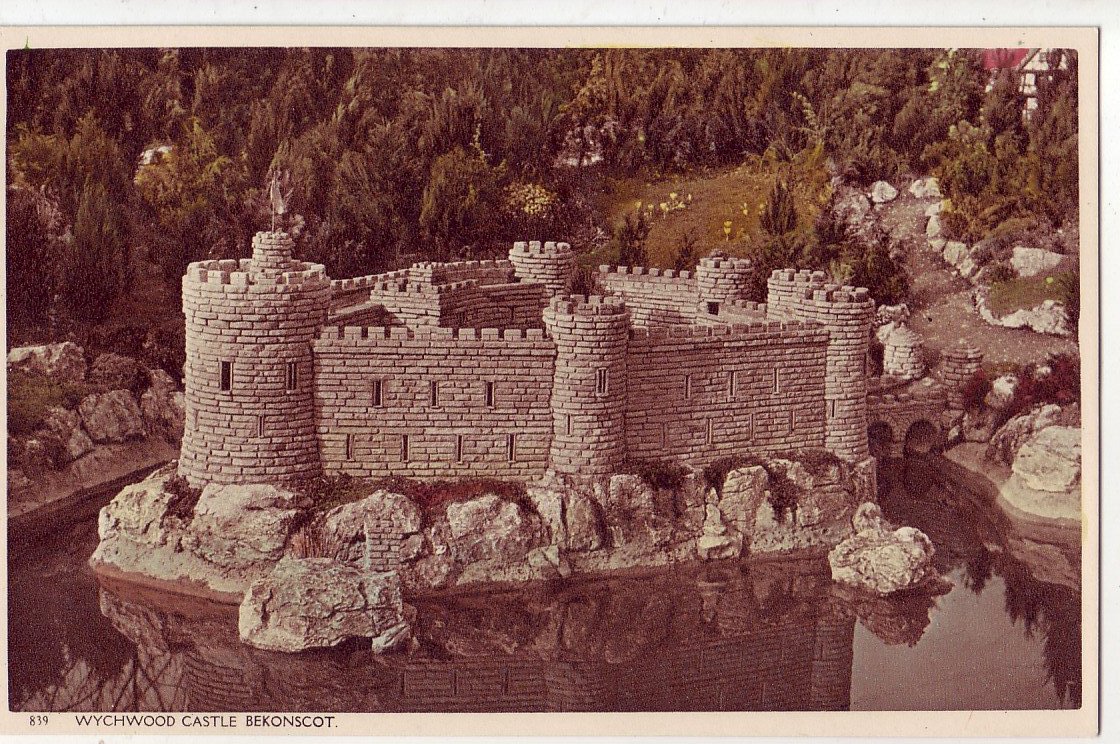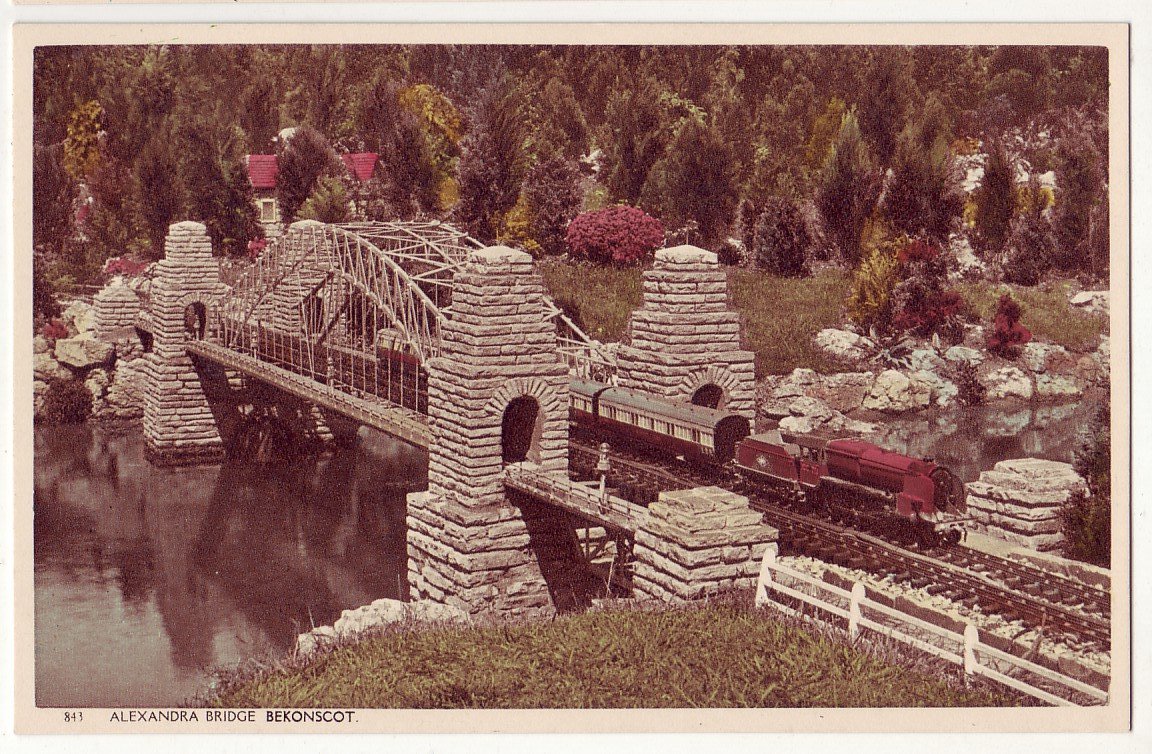Growing Up
Following the continued success of the original model village area, it was decided to significantly increase its size. Previously, the village comprised Bekonscot Town, Greenhaily windmill, Evenlode and Southpool Docks. In 1945 the village of Splashyng was founded. Alexandra Lake was dug out and a likeness of Sydney Harbour Bridge was built to span the water and carry the branch railway out to Evenlode.
At this time, a variety of scales were used for model making. Trains were 1:32 scale, houses and people were 1:12 and 1:15, whilst large buildings and boats were as big as the space would allow. It was decided to pursue an almost uniform scale thereafter of 1:12 and 1:15, the former now the world-standard for dolls houses. But the model railway was too well-established to be changed. To this day, very few people notice the trains are less than half the correct size for their surroundings!
More complex, modern and detailed buildings were constructed, while the villages grew from tiny hamlets to include industries, an airfield and many more railway lines. At one stage there was almost double today’s track length of 450 metres.
The Second World War left Bekonscot, like the outside world, in a bad way. Maintenance had all but stopped, materials were hard to acquire and most staff were away fighting. In 1948, an ambitious rebuilding programme rejuvenated or replaced many of the derelict buildings, maintaining the rural atmosphere.
Now surrounded by residential suburbia, in 1952 Bekonscot won a three-year court battle with the town planners permitting it to remain open to the public.
The village and its tiny population then grew, as did its popularity and charity fundraising, under the auspices of Mr Callingham and his team, most of whom now worked full-time at Bekonscot. It was at this time that the majority of other model villages around Britain were begun by people who had visited, read about or even worked at Bekonscot.
Mr Callingham, gentleman, philanthropist, designer and grandfather of the world’s model villages, died in 1961.







